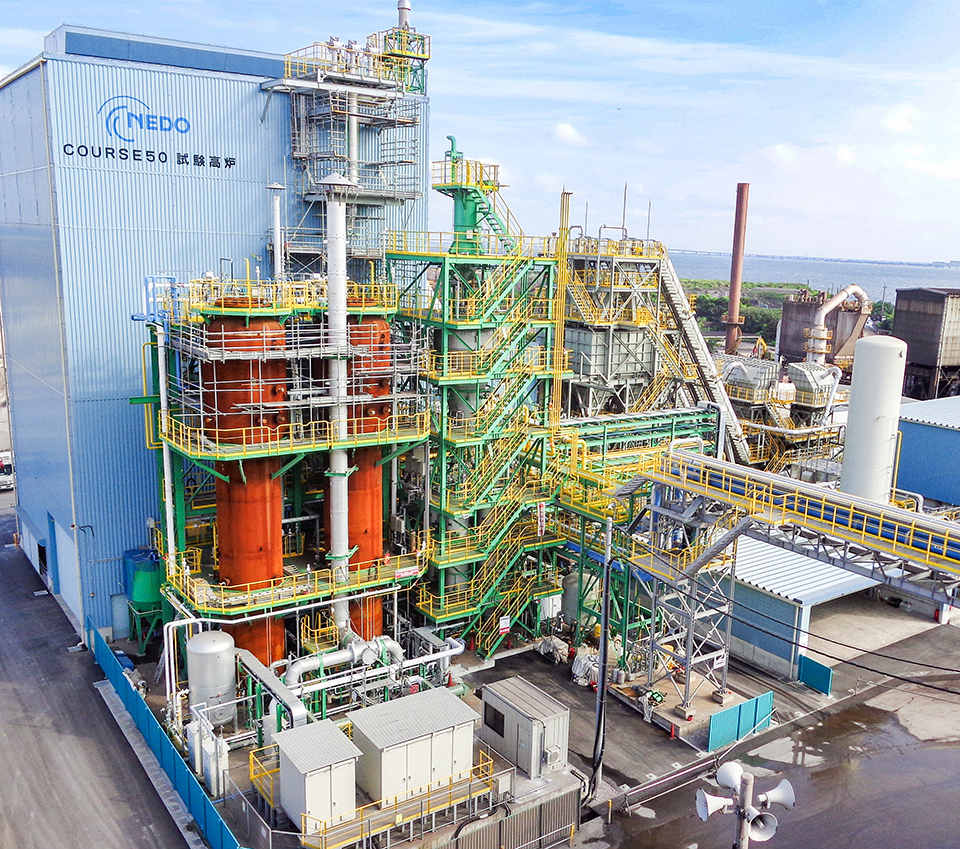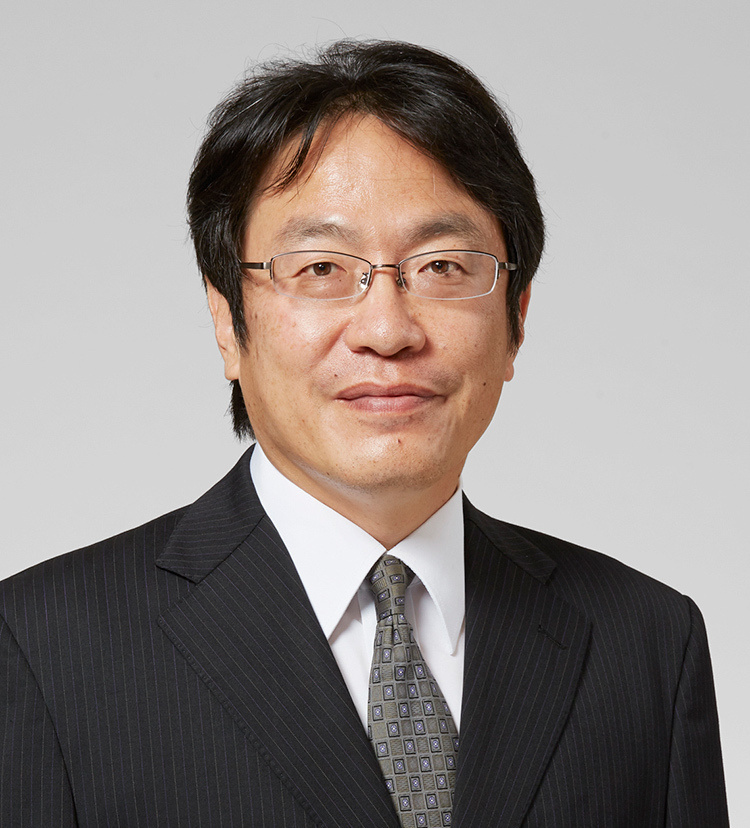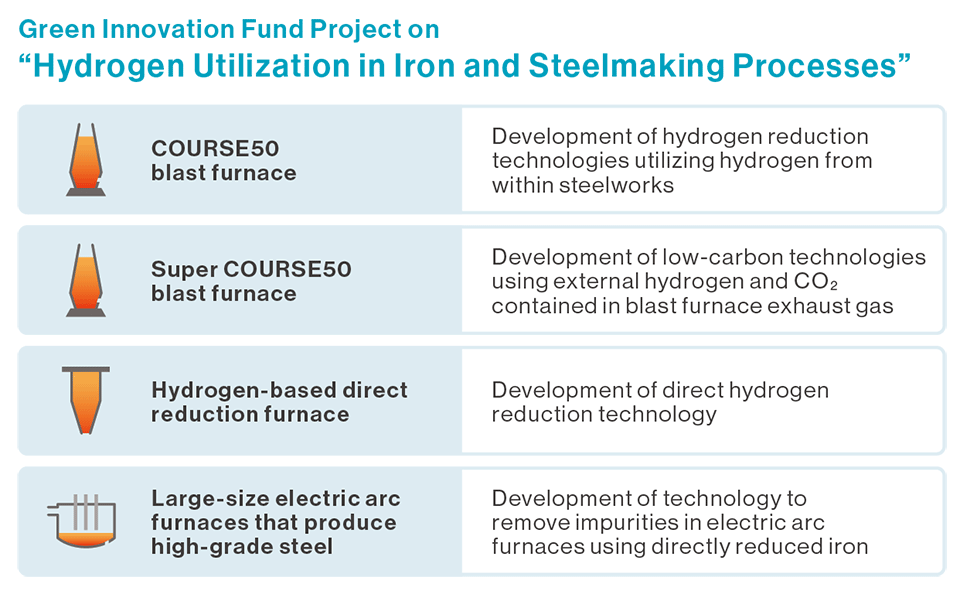Japan’s goal of carbon neutrality by 2050 necessitates reductions in industrial carbon emissions. The country’s steel industry is taking steps toward that goal by using hydrogen to decarbonize the steelmaking process. The aim is to lead the world in technological innovation and the transition to “green steel” production.

The development of blast furnace hydrogen reduction technology is underway using NEDO’s Green Innovation Fund (photo of Nippon Steel’s hydrogen reduction test furnace in Kimitsu, Chiba Prefecture). ©︎NEDO HYDROGEN UTILIZATION IN IRON AND STEELMAKING PROCESSES PROJECT
Katana (Japanese swords)—pliable enough not to break, yet strong enough to cut neatly and sharply—are the time-honored epitome of high-grade steel. Just as the traditional swordsmith meticulously works steel to combine those contradictory properties within a sword, Japan’s steel industry produces high-performance, high-quality steel materials fit for a variety of applications, supporting its global competitiveness in industrial products. The quality of Japanese steel is rated very highly, with 40% of all domestically produced steel exported overseas, mainly to other parts of Asia.
The steel industry in Japan is now assiduously taking on the challenge of going carbon-free. As Japan seeks to become carbon neutral by 2050, industrial decarbonization has become an ever more pressing problem. Accounting for 14% of Japan’s carbon emissions, the domestic steel industry has targeted a 30% reduction in total emissions by 2030, compared with a 2013 baseline. Having already achieved the world’s highest level of energy efficiency within its production process, the industry is energetically working to develop innovative technologies in order to achieve this 2030 goal and carbon neutrality by 2050.

One of the most advanced initiatives now taking place is the development of steelmaking technology that uses hydrogen. Japan’s steel industry developed through the blast furnace process, which is energy efficient and capable of mass-producing high-quality steel with few impurities. Still, such a process uses carbon to reduce (remove oxygen from) iron ore, the raw material, making carbon (i.e., CO2) emissions inevitable. However, if some of the carbon used for the reduction process is replaced with hydrogen, the resulting byproduct is water, not CO2.
In 2008, Japan launched COURSE50, a national project supported by the New Energy and Industrial Technology Development Organization (NEDO). The project aims to reduce carbon emissions by 30% from 2013 levels by combining technologies that separate and recover CO2 with technologies that reduce CO2 emissions from blast furnaces through injecting hydrogen generated on-site into the blast furnace. Verification experiments are scheduled to begin in 2026.

“I believe that the decarbonization of the steel industry needs to be tackled as a mission shared by all of Japan,” says ORIHASHI Eiji of Nippon Steel.
In addition to blast furnaces, the Green Innovation Fund project is developing multiple hydrogen reduction technologies in collaboration with the consortium. For example, direct hydrogen reduction technology uses hydrogen instead of natural gas to reduce low-grade iron ore, while electric arc furnace technology removes impurities and produces high-grade steel with low emissions. However, the kind of steelmaking process used differs depending on the country as several factors come into play, such as the availability of high-quality iron ore or scrap that can be used. “Every decarbonization process has its advantages and disadvantages, requiring a multi-track approach. Although we have yet to find the perfect solution, if we develop innovative technologies, they will eventually become widespread around the world, leading to a reduction in global CO2 emissions. I believe that this is where our technological capabilities can be applied,” asserts Nippon Steel’s Orihashi.
Abundant in terms of resource availability and easy to recycle, steel is a remarkable material and supports every aspect of our lives, from infrastructure and cars to electrical appliances. To make the steel industry sustainable, Japan will work with the public and private sectors to pave the way toward producing “green steel.”































